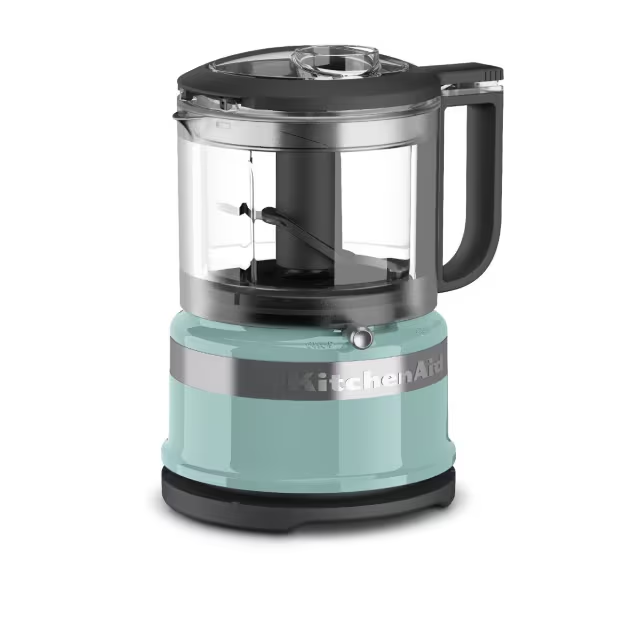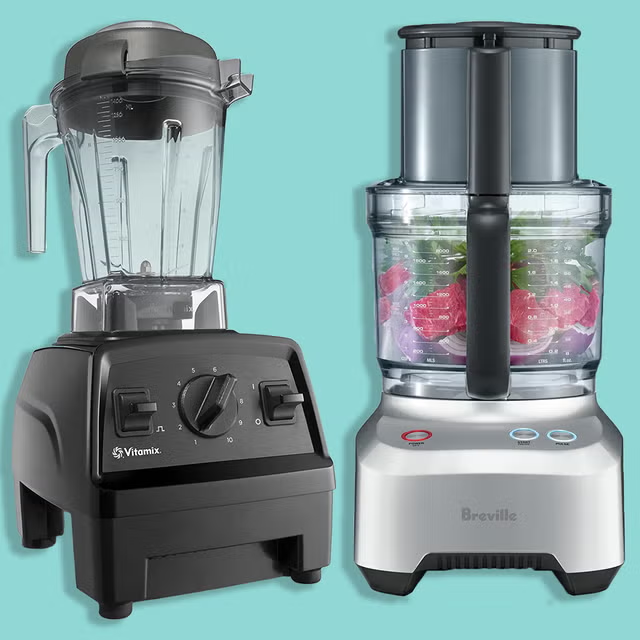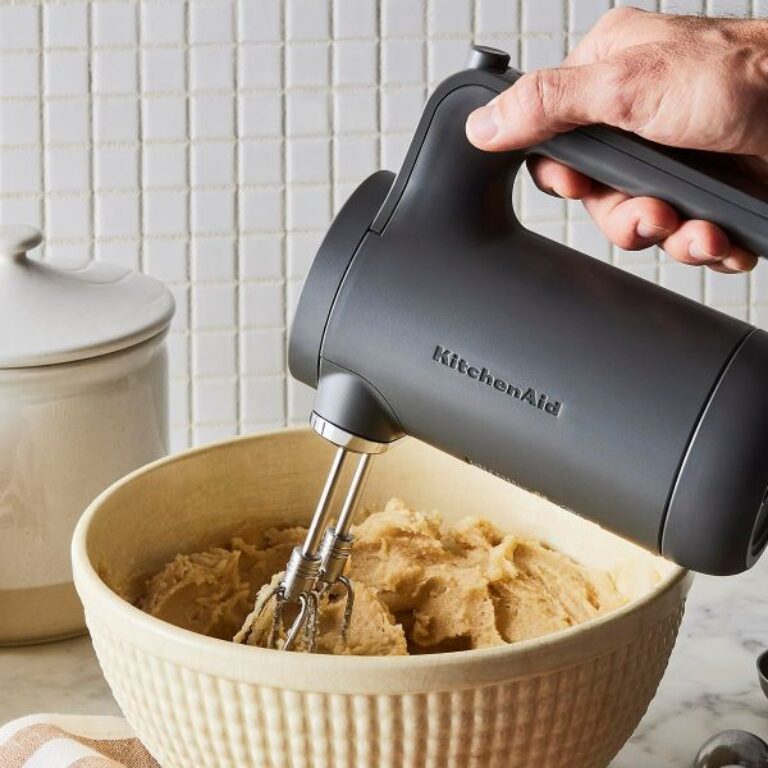
Introduction to Immersion Blenders and Food Processors
In any modern kitchen, two very useful tools often spark debate: immersion blender vs food processor. These appliances may seem similar upon first glance, but they serve different purposes. An immersion blender, also known as a stick or hand blender, is a handheld tool ideal for blending ingredients within pots and containers. Consider it the portable cousin of the countertop blender. On the other hand, a food processor is more like a mini food-prep warrior with a fixed base and a variety of blades for slicing, chopping, and dicing.

It’s important to understand their design nuances and functionality. Immersion blenders excel with liquids and can blend in any depth of vessel. A food processor often has a bowl with a fitted blade and requires enough volume to work effectively. Both appliances aim to make your cooking experience easier and faster. Yet, they shine in different scenarios based on their design and operation.
Kitchen tasks can be tiresome and time-consuming. That’s where these tools come in. Immersion blenders and food processors can cut down on prep time and add efficiency to your cooking process. Knowing their ideal uses and differences helps you make the right choice between the two, particularly if the space or budget constrains you to selecting just one.
Throughout this blog, we’ll delve into the specific uses of each appliance, their overlaps in functionality, and what factors might lead you to choose one over the other. We’ll also cover how to properly clean and maintain them. Understanding these points will guide you toward making an informed decision for your kitchen needs.
Comparing the Design and Functionality
When exploring the differences between an immersion blender and a food processor, design and functionality are key. Let’s break this down to help you understand which appliance fits your kitchen needs better.
Immersion Blender Design
Immersion blenders feature a compact, stick-like shape. This design allows them to be submerged into pots and other containers. They don’t require large volumes to operate. The motor is located in the upper part while the blades sit at the bottom of the stick. This makes them perfect for blending soups or sauces directly on the stove.
Food Processor Design
Food processors come with a more robust and stable base. This contains the motor and a detachable bowl fitted with a variety of blades. The design is ideal for processing larger volumes of food. You can switch out blades to slice, dice, or shred ingredients.
Functional Differences
Immersion blenders excel with liquid-heavy tasks. For example, you can blend a soup until it is perfectly smooth right in its cooking pot. This removes the need for transferring hot liquids.
Food processors handle a range of tasks due to their powerful motors and diverse attachments. They effortlessly chop vegetables, mix doughs, and even grind nuts.
In summary, the design and functionality of immersion blenders and food processors cater to specific culinary tasks. Your choice depends on what types of dishes you prepare often.
Ideal Uses for an Immersion Blender
An immersion blender shines in many kitchen tasks. This tool is ideal for pureeing soups and sauces directly in the pot. It saves you the hassle of transferring hot liquids to a blender. With an immersion blender, you can blend any depth of vessel, which is great for deep pots.
It also works well for small tasks like making smoothies or milkshakes. Just blend right in your drinking glass! Immersion blenders are handy for making whipped cream quickly. Place it in a deep bowl, and within minutes, you’ll have fluffy cream without a mixer.
These blenders are good for making baby food as well. You can blend cooked vegetables and fruits to the right consistency. If you enjoy making homemade mayonnaise or salad dressings, an immersion blender can emulsify your ingredients smoothly.
Overall, an immersion blender is a versatile tool for liquid-heavy or semi-liquid recipes. Its compact size and ease of cleaning make it a practical choice for quick tasks.
Best Practices for Using a Food Processor
To get the best out of a food processor, follow certain best practices. A food processor can simplify many kitchen tasks with proper usage. Below are some guidelines to help you leverage this appliance to its full potential.
Choose the Right Blade
Select the correct blade for the task. Use the chopping/mixing blade for doughs and chopping. The shredding disc is perfect for cheese and vegetables.
Don’t Overfill
Avoid filling the bowl too much. This causes uneven processing. Fill only to the recommended level, usually marked inside the bowl.
Use Pulse Function
Start with the pulse function for controlled chopping. It lets you manage the texture, preventing overprocessing.
Pre-Cut Large Ingredients
For even results, cut food into uniform pieces before processing. This ensures all pieces are finely chopped.
Add Liquids Slowly
When making emulsions, pour liquids in slowly. Use the feed tube to add them steadily for smooth blends.
Clean Promptly
After use, clean the food processor immediately. This prevents food from sticking to the blades and bowl.
By following these best practices, you’ll maximize your food processor’s effectiveness in the kitchen. Keep these tips in mind and you’ll enjoy quick and consistent results every time you process.
 Overlaps and Differences in Function
Overlaps and Differences in Function
While both immersion blenders and food processors use rotating blades, they serve distinct roles. The two can sometimes do similar things but in unique ways. Recognizing the overlaps and differences can help you decide which one to use.
Immersion blenders and food processors can both puree food. However, immersion blenders are better suited for liquids and can be used directly in the cooking pot. Food processors are great for handling larger volumes and solid foods.
Both appliances can help make sauces and dips, but the texture might vary. A food processor can achieve a chunkier result; the immersion blender creates silkier mixtures. For finely chopped or shredded ingredients, the food processor stands out. It has specific blades for these tasks.
When it comes to emulsifying dressings or mayonnaise, both can do the job. Yet, an immersion blender might be quicker and easier to clean for small batches. On the other hand, a food processor can handle larger quantities more efficiently.
Ultimately, think about the kind of dish you are making before choosing one. Consider the quantity, the texture desired, and how much effort you want to spend on clean-up. This will guide you to the right appliance for each kitchen task.
Deciding Factors: When to Use Which Appliance
Deciding whether to use an immersion blender or a food processor can come down to a few key factors. Here’s what to consider when you’re on the fence about which appliance to grab for your kitchen task.
Task at Hand
Start with the job you need to do. Use an immersion blender for smooth soups or saucy purees. Reach for a food processor when you have a lot of chopping, slicing, or need to work with dough.
Quantity of Food
Think about the amount of food. An immersion blender is great for small quantities. A food processor can handle much larger batches of ingredients efficiently.
Desired Texture
Texture matters. For silky and smooth textures, an immersion blender is ideal. A food processor gives more control for chunky or varied textures.
Convenience and Cleanup
Consider ease of use and cleanup. An immersion blender can be simpler to use and clean, especially for blending in pots. A food processor requires a bit more setup and cleaning but can be more versatile.
Space and Storage
Evaluate your kitchen space. If storage is limited, an immersion blender takes up less room. Food processors can be bulkier but offer more functions.
Budget
Lastly, think about your budget. Immersion blenders tend to be more affordable. Food processors are pricier but can do more tasks.
By taking these factors into account, you can make a smart choice between an immersion blender and a food processor based on what you’ll use it for most.
Cleaning and Maintenance Tips
Proper cleaning and maintenance enhance the longevity and performance of your kitchen appliances. Below are tips specifically tailored for immersion blenders and food processors.
Immersion Blender Cleaning
- Detach the blade unit from the motor. This is crucial for safe cleaning.
- Rinse the blade under warm water immediately after use to remove residue.
- Soak in soapy water if the residue is stubborn.
- Avoid immersing the motor part in water. Wipe it with a damp cloth instead.
- Dry all parts thoroughly before reassembly to prevent rust and odor.
Food Processor Maintenance
- Disassemble all removable parts. Includes the bowl, lid, and any blades or disks.
- Hand-wash blades to maintain sharpness. Use caution to avoid injuries.
- Use mild detergent for washing the removable parts. You can use the dishwasher if they are marked safe.
- Wipe down the motor base with a slightly damp cloth. Never submerge in water.
- Check the seals and gaskets regularly for wear and replace as necessary.
By following these straightforward tips, you ensure that your appliances remain clean, hygienic, and ready for the next use. Regular maintenance also prevents the build-up of odors and extends the life of your immersion blender and food processor.
 Conclusion: Making the Informed Decision for Your Kitchen Needs
Conclusion: Making the Informed Decision for Your Kitchen Needs
When you’re choosing between an immersion blender and a food processor, it’s crucial to consider your kitchen habits and needs. If you love crafting smooth, creamy soups or quickly whipping up dressings, then the ease and minimal cleanup of an immersion blender might be perfect for you. Its handheld convenience is unrivaled for smaller, more liquid-focused tasks. On the flip side, for avid bakers or those who spend lots of time prepping large quantities of food, a food processor could be your best ally. It adeptly handles dough, chops vegetables uniformly, and can manage many functions with the swap of a blade.
Ultimately, the decision rests on functionality, frequency of use, and personal preference. Let’s not forget that countertop space and budget play roles too. Both appliances offer potential to elevate your culinary game, whether it’s by saving time or enhancing the texture of your creations. Do you prioritize quick and simple tasks? Lean towards the immersion blender. Do you need multifaceted capabilities for diverse recipes? Consider investing more in a food processor.
Both appliances can coexist in a well-outfitted kitchen, but choosing one means ensuring it aligns with your cooking style. Keep your preferences front and center, and select the appliance that will make your time in the kitchen more enjoyable and efficient. With the right tool, your culinary endeavors will not only be easier but also more satisfying and successful.





